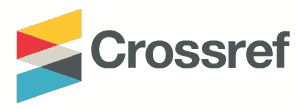Challenges and Progress in the Fabrication of Silicon Nanowire Tunnel Diodes
DOI:
https://doi.org/10.62146/ijecbe.v1i1.23Keywords:
Silicon, Nanowire, Pn Diode, Band-to-Band Tunneling, Silicon-on-Insulator, NanofabricationAbstract
Tunnel (Esaki) diodes prepared in silicon (Si) nanowires could provide a unique platform to investigate band-to-band tunneling (BTBT) transport in nanoscale. However, the successful fabrication of these devices poses substantial challenges, related to controlling high doping concentrations, maintaining the abruptness of the pn junction, and minimizing roughness due to nanoscale patterning. This paper comprehensively addresses these challenges, suggesting potential strategies for optimization. Additionally, examples of nanoscale diodes fabricated so far in silicon-on-insulator (SOI) substrates are showcased, highlighting their tunnel-diode characteristics at low temperatures. Furthermore, the underlying physics is discussed: phonon-assisted tunneling, single-charge tunneling and donor-acceptor compensation. For practical applications, such as photodetectors or tunnel field-effect transistors, room-temperature operation is also required.
References
L. Esaki, “New phenomenon in narrow germanium p – n junctions”, Phys. Rev. 109 (2), 603 (1958).
L. Esaki and Y. Miyahara, “A new device using the tunneling process in narrow p-n junctions”, Solid State Electron. 1 (1), 13 (1960).
A. G. Chynoweth, R. A. Logan, and D. E. Thomas, “Phonon-assisted tunneling in silicon and germanium Esaki junctions”, Phys. Rev. 125, 877 (1962).
C. T. Sah, “Electronic processes and excess currents in gold-doped narrow silicon junctions”, Phys. Rev. 123, 1594 (1961).
A. G. Chynoweth, W. L. Feldman, and R. A. Logan, “Excess tunnel current in silicon Esaki junctions”, Phys. Rev. 121, 684 (1961).
A. C. Seabaugh and Q. Zhang, “Low-voltage tunnel transistors for beyond CMOS logic”, Proc. IEEE 98 (12), 2095 (2010).
A. M. Ionescu and H. Riel, “Tunnel field-effect transistors as energy-efficient electronic switches”, Nature 479, 329-337 (2011).
H. Schmid, C. Bessire, M. T. Bjork, A. Schenk, and H. Riel, “Silicon nanowire Esaki diodes”, Nano Lett. 12 (2), 699-703 (2012).
S. M. Sze, VLSI Technology; McGraw-Hill: New York, NY, USA (1983).
F. A. Trumbore, "Solid Solubilities of Impurity Elements in Germanium and Silicon", Bell Syst. Tech. J. 19, 38-43 (1976).
B. I. Shklovskii and A. L. Efros, “The Theory of Heavily Doped and Highly Compensated Semiconductors (HDCS)”. In Electronic Properties of Doped Semiconductors; Series in Solid-State Sciences; Springer: Berlin/Heidelberg, Germany (1984).
R. C. Jaeger and F. G. Gaensslen, “Simulation of impurity freezeout through numerical solution of Poisson’s equation with application to MOS device behavior.” IEEE Trans. Electron Dev. 27, 914-920 (1980).
P. P. Altermatt, A. Schenk, and G. Heiser, “A simulation model for the density of states and for incomplete ionization in crystalline silicon. I. Establishing the model in Si:P”, J. Appl. Phys. 100, 113714 (2006).
P. P. Altermatt, A. Schenk, B. Schmithüsen, and G. Heiser, “A simulation model for the density of states and for incomplete ionization in crystalline silicon. II. Investigation of Si:As and Si:B and usage in device simulation”, J. Appl. Phys. 100, 113715 (2006).
H. Peelaers, B. Partoens, and F. M. Peeters, “Formation and segregation energies of B and P doped and BP codoped silicon nanowires.” Nano Lett. 6, 2781-2784 (2006).
S. M. Sze, Physics of Semiconductor Devices, John Wiley & Sons (1981).
K. W. Teng and S. S. Li, “Theoretical calculations of Debye length, built-in potential and depletion layer width versus dopant density in a heavily doped p-n junction diode”, Solid-State Electronics 28 (3), 277-285 (1985).
M. Tabe, H. N. Tan, T. Mizuno, M. Muruganathan, L. T. Anh, H. Mizuta, R. Nuryadi, and D. Moraru, “Atomistic nature in band-to-band tunneling in two-dimensional silicon pn tunnel diodes”, Appl. Phys. Lett. 108, 093502 (2016).
G. Prabhudesai, M. Muruganathan, L. T. Anh, H. Mizuta, M. Hori, Y. Ono, M. Tabe, and D. Moraru, “Single-charge band-to-band tunneling via multiple-dopant clusters in nanoscale Si Esaki diodes”, Appl. Phys. Lett. 114, 243502 (2019).
R. Nowak, D. Moraru, T. Mizuno, R. Jablonski, and M. Tabe, “Effects of deep-level dopants on the electronic potential of thin Si pn junctions observed by Kelvin probe force microscope”, Appl. Phys. Lett. 102 (8), 083109 (2013).
R. Nowak, D. Moraru, T. Mizuno, R. Jablonski, and M. Tabe, “Potential profile and photovoltaic effect in nanoscale lateral pn junction observed by Kelvin probe force microscopy”, Thin Solid Films 557 (30), 249-253 (2014).
D. Moraru, T. Kaneko, Y. Tamura, T. T. Jupalli, R. S. Singh, C. Pandy, L. Popa, and F. Iacomi, “Single-charge tunneling in codoped silicon nanodevices”, Nanomaterials 13, 1911 (2023).
A. Samanta, M. Muruganathan, M. Hori, Y. Ono, H. Mizuta, M. Tabe, and D. Moraru, “Single-electron quantization at room temperature in a-few-donor quantum dot in silicon nano-transistors”, Appl. Phys. Lett. 110, 093107 (2017).
A. Afiff, A. Samanta, A. Udhiarto, H. Sudibyo, M. Hori, Y. Ono, M. Tabe, and D. Moraru, “Coulomb-blockade transport in selectively-doped Si nano-transistors”, Appl. Phys. Express 12, 085004 (2019).
T. T. Jupalli, A. Debnath, G. Prabhudesai, K. Yamaguchi, P. J. Kumar, Y. Ono, and D. Moraru, “Room-temperature single-electron tunneling in highly-doped silicon-on-insulator nanoscale field-effect transistors”, Appl. Phys. Express 15, 065003 (2022).
C. Pandy, G. Prabhudesai, K. Yamaguchi, V. N. Ramakrishnan, Y. Neo, H. Mimura, D. Moraru, “Electron transport via a few-dopant cluster in the presence of counter-dopants in silicon nanowire transistors”, Appl. Phys. Express 14, 055002 (2021).
Downloads
Published
How to Cite
Issue
Section
License
Copyright (c) 2023 IJECBE

This work is licensed under a Creative Commons Attribution 4.0 International License.






